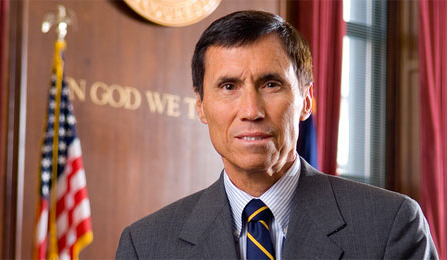Faculty Stories
Professor Ewing’s new book asks how best to prevent child sex abuse

SUNY Distinguished Service Professor Charles Patrick Ewing’s book Preventing the Sexual Victimization of Children examines the ways adults have tried to protect children from sexual abuse.
The statistics are shocking: As many as one-third of boys and three-quarters of girls in the United States experience some sort of sexual abuse as children or adolescents. The response has been determined: governments have passed strict laws, entered into international treaties, and established large bureaucracies in hopes of curbing child sexual abuse.
But, says Professor Ewing, an honest accounting shows that none of these efforts has been demonstrably effective against the problem. “The bottom line,” he says, “is that for most part the data don’t support much of what’s been done and it’s very difficult to prevent children from being sexually exploited or abused.”
What does work? Some common-sense strategies, he says, that can be as simple as teaching children to stay out of risky situations and making transparency and safety a priority in organizations that serve children.
That common-sense advice is at the heart of Preventing the Sexual Victimization of Children: Psychological, Legal, and Public Policy Perspectives (Oxford University Press), Ewing’s newly published book that critically examines the ways adults have tried to protect children from sexual abuse.
The idea for the book, Ewing says, came when he spoke at a conference at Johns Hopkins University on preventing child sexual abuse. “I learned a lot about the subject and I heard a lot of ideas, but not much empirical support for them,” he says. “I decided to survey all the methods that people have purported to use to prevent child sexual abuse. I came up with a rather large list, and then I asked, do the data support any of these?”
Chapters in the book give a historical overview of the problem, examine the effects of the crime on children, discuss prevention strategies aimed at parents and children and those aimed at perpetrators, and review Internet-related child sexual abuse and exploitation, the abuse of children in institutional settings, and the significant problem of the prostitution of children.
“Over the past couple of decades society has made significant gains in preventing child sexual abuse,” Ewing writes in his conclusion. “However, if these apparent gains are to be maintained in the years to come, preventive efforts … will need to be carefully examined using both empirical evidence and logical reasoning.”
He lists as “probably ineffective or counterproductive” such strategies as enhanced criminal penalties, extending statutes of limitation, civil commitment of child sex offenders and restrictions on offenders’ jobs, residency and travel. “Strategies that may be effective” include parent education, encouraging bystander intervention, background checks for those who work with children, and limiting the sexualization of children in media and advertising. Strategies most likely to be effective, Ewing writes, include risk education and teaching children to protect themselves, minimizing private space in schools and juvenile detention facilities, using technology to stop the production and distribution of child pornography, and severely punishing the producers and distributors of such material.
“It seems almost so simple as to be absurd,” Ewing says, “but we keep looking at these grand schemes and there are some things just staring us in the face that are more effective.”
Such as:
- Rethinking the architecture of institutions that serve children, putting in more windows and fewer doors, with more open space.
- Parents not allowing their children to be alone with teachers or other adults.
- Teaching children to protect themselves. “Even younger kids can be taught what’s wrong and right, and to tell someone if something happens to them,” Ewing says. “With older kids you can teach them to get away, and to avoid situations where they might be subject to sexual abuse.”
- “Desexualizing” the way children’s images are used in media. “Everywhere you look,” Ewing says, “people are trying to sell you something and using sexualized images, and a lot of the images are about kids.”
- Changing the culture of institutions that serve children. Ewing credits recent changes in the Catholic Church and the Boy Scouts for reducing the risks of predatory sexual behavior.
- Treating children who are arrested for prostitution – almost always runaways – as victims and not criminals, and diverting them into programs that provide housing, education, counseling and therapy.
- Making Internet service providers responsible for screening out child pornography being traded on their bandwidth. “Clearly a huge way in which kids are sexually abused is in the making and distribution of child pornography,” Ewing says. “As it is now, the guy who gets caught downloading or possessing child porn gets a draconian prison sentence, but what about the people who create the stuff?”